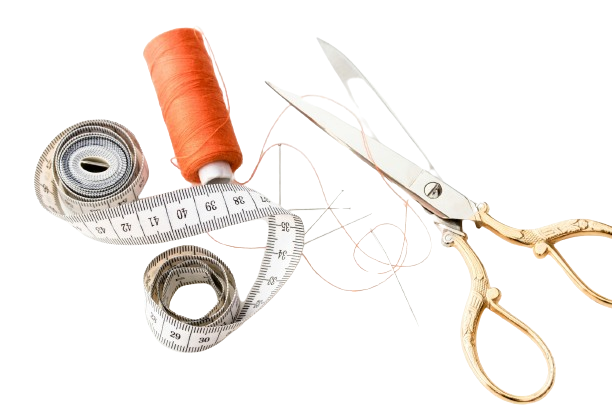What Is a Recovery Run?
Running is a great way to stay at the premium health but without taking moderate sessions and time to recover athletes are likely to suffer injuries. There we suggest cleaning through running. If you’re a novice, you may be wondering about how to do a recovery run correctly. In this blog we will cover What is Recovery Runs? I will go through in details that to help you strengthen this key part of your workouts.
What Is a Recovery Run
A recovery run is a short, effortless run with a really low intensity. For runners, it is usually done the day after a training session or race and is a component of every runner’s training program. Besides this, your body’s circulation will be easy- growing the flow of blood through your veins without any additional burden to your body. The basic purpose of a recovery run is to aid recovery and better performance without an added extra stress to the body.
Importance of Recovery Runs
Improved Recovery
Recovery runs are elemental to the process of healing. Recovery run boosts the overall performance of your body circulation. This improved circulation helps to remove the waste accumulated during the anaerobic process of intensed exercise, e. g. the lactic acid. The result?Faster muscle recovery, which enables your body to be ready for next training session, and thus be less stiff and sore.
Reduced Injury Risk
In fact, injuries have the ability to hinder the most determined runners. One of the main goals of including recovery runs when training is reducing accidents rates. Strains and other injuries often occur due to tensed muscles when they are sore. Recovery runs can be beneficial in terms of keeping your muscle flexible and relaxed, making it highly unlikely for you to get an injury.
Mental Break
Measuring day after day hard can be overpower not only your body but also head. Recovery runs allow the mind to relax and reduce the stress accumulated during the week. They provide a space free of the pressure within where one can put out his head and to experience the simple joy of running without the highs. It is like cleansing the canvas for your mind.
Maintains Fitness
On the same token however, even during your easy days, you need to keep your aerobic base. Running on recovery days can be a great way of getting back on track. Through the conservation of your energy level while you carry out a moderate speed workout, you are still able to strengthen your endurance and develop greater overall physical fitness without the pressure of the more intense workout.
How to Do a Recovery Run
Preparation for a Recovery Run
Scheduling Your Recovery Run
Ideal Timing Post-Workout: The timing of scheduling a workout is usually not more than 24 hours after a heavy exercise or race session. It is this expediency that aids to restart the recovery system through improved blood flow to an exhausted muscle.
Frequency in Training Regimen: A standard recovery run is enough for many runners if they do not compete at a high level or train more than a few times per week. Hear and respond to your body in a way that lets you to watch the frequency control in order to not over tax yourself.
Choosing the Right Distance and Duration
Recommended Timeframes: Dedicate an hour maximum for your recovery runs. The duration of this type of meditation is usually 20-30 minutes. Indeed, this is just the amount of time to stimulate recovery without any fainting.
Adapting for New Runners: Instead of running, walk a little and whenever you feel like it, start running again. Start with a brisk walk and casually substitute the running intervals for small running. This kind of training helps you to improve your endurance while ensuring that your body receives the necessary rest and recuperation.
Executing the Recovery Run
Maintaining the Right Pace
Understanding Conversational Pace: Your recovery run has to be comfortable, with significant amount of joke and fun. You should easily talk along the run course which indicates that you have developed the right level of stamina. If you can’t inhale deeply, you are not able to maintain proper pacing. Target about 30-50% difficulty level with respect to your maximum.
Effort Levels: Consider a harmless jog for 30-50%. The intensity of your exercises should be milder than usual to provide recovery for the extensive sessions.
Selecting Suitable Terrain
Importance of Flat or Slightly Rolling Courses: Get some fresh air and run on a flat or very slowly rolling location. Don’t pick the hills or any tough surfaces that might put you through an unnecessary harder pressure than it’s needed. The aim is to eliminate obstacles and ensure an ultimately pleasant procedure.
Avoiding Challenging Terrains: It is better of course to leave such complex trails or paths that significantly ups or downs in an height. These are not only very uncomfortable but also stand the chance of making your recovery run more intense, which is exactly the opposite of what you want to achieve.
Focusing on Form
Benefits of Easy Strides Focus on maintaining loose, easy strides during your recovery run. This helps to keep your muscles relaxed and promotes efficient movement patterns.
Ensuring Good Running Form: Even though is a recovery run, good form still matters. Please keep your posture erect, your shoulder less tense and core engaged. This also plays a role in recovery and is capable of giving you good routines for your usual training runs.
Listening to Your Body
Prioritizing Comfort
Recognizing Comfortable Running Sensations: It is important after your recovery run to feel the comfort. When you hit some barriers, you should stop and assess the surroundings carefully. Pain is the message of your body. If you run through it, injuries can happen.
Addressing Sharp Pains: If you have been through any sharp or sudden pains, the time to stop running is right. See a healthcare worker for the pain when it persists. The runs for working out should not hurt at all and instead should be enjoyable.
Dressing Appropriately for the Weather
Avoiding Overheating: Choose loose and breathable clothes to keep cool on your cruise. When the weather is warm choose garments made from sweat-wicking materials that keep you cool and dry.
Layering Techniques for Different Climates: In colder weather, layering is key. Wear a moisture-wicking base layer, an insulating middle layer, and a windproof outer layer. This combination helps regulate your body temperature and keeps you comfortable.
Enhancing Recovery Post-Run
Post-Run Stretching
Types of Effective Stretches: Once the recovery run is done, spend five minutes or so for stretching. The key is static and gentle stretching for the actual muscles (hamstrings, quadriceps, calves, hips).
Importance of Gentle Stretching: Stretching tends to further reduce the muscle tension and increase flexibility of muscles. On the other hand, it improves the elimination of metabolic byproducts, as well. This results in the faster recovery.
Staying Hydrated
Hydration Strategies: Hydration is crucial for recovery. It is advisable to drink plenty of water even after your run to make up for the loss of fluid. This aim to mean that your body electrolyte balance is maintained and recovery is enhanced overall.
Role of Electrolytes: Consider incorporating electrolyte drinks if you’ve had a particularly sweaty session. Electrolytes aid in rehydration of your body better than water itself; this is achieved because they minimize the potential for cramping and dehydration.
Read Also: How to Hold a Crochet Hook
Final Words
Using recovery runs to your training program, is a wise manner of raising your performance level. The recovery runs are the good way of helping to maintain your running consistency, reduce muscle soreness, and preserve your body from the harsh rigors. foremost, the point is that a good recovery run should be simple and full of fun and joy. Listen to your body and modify when necessary to experience the positive outcomes from this greatest training method.







